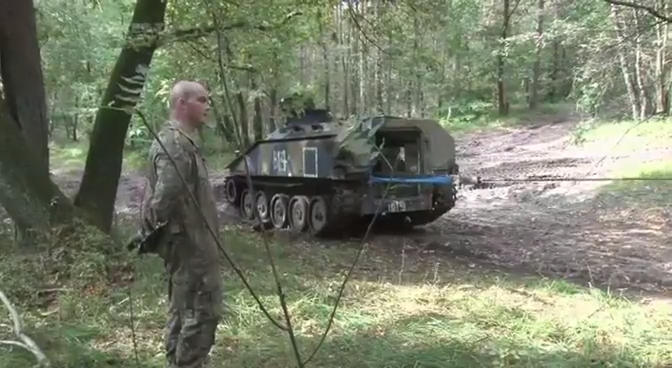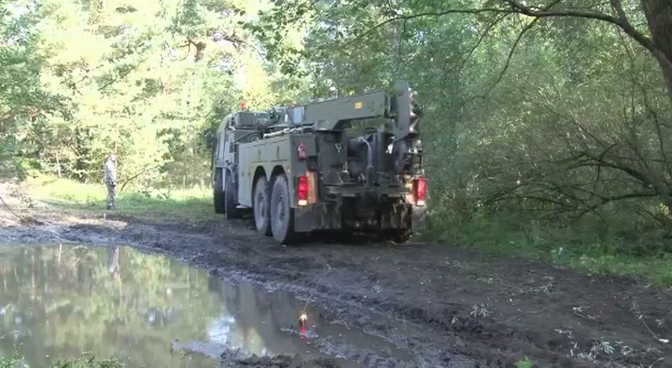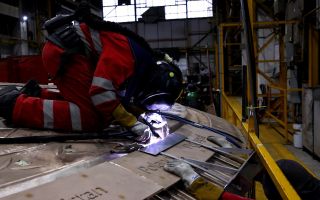Getting unstuck: How the British Army keeps military vehicles moving
The battlefield can pose many dangers for military vehicles, and its down to the Royal Electrical and Mechanical Engineers (REME) to extract them when they get into trouble in difficult terrain.
So soldiers from 3rd Battalion REME have been putting their skills to the test at the Sennelager training area in Germany.
If you’ve ever had to get your car towed, it’s a pretty simple rope hook-up and pull, and off you go.
But when the vehicle being towed weighs several tonnes and is around a bend and in a bowl, it’s a lot more complicated.

According to Staff Sergeant Gavin Carruthers it is a very difficult exercise:
“It’s not an easy task; it’s very difficult. The positioning of the vehicle is key”.
According to Sergeant Chris Payne, soldiers from 3rd Battalion REME have been put through their paces during their assessment to take them from Class 2 to Class 1:
“If they pass this, they get a report sent to Glasgow, and they can move on to their Class 1 course, and progress further on in their career”.

Moving vehicles like the CVRT can take several hours – if they get the angles, weights or calculations wrong, not only could they fail the test, but it can put the team in danger.
If the twisted metal tow wire snaps, it could cause serious injury.
Once plans have been put in place by the Crew Commander, the team can start the recovery preparations.
The team hooks up the vehicle to tow lines, pulleys and winches - but with a corner and a hill to navigate, it isn’t plain sailing, and the team runs into difficulties.
After several hours, some brute force and a lot of calculations, the CVRT comes over the hill and from there on its an easy journey back to the tow vehicle.








